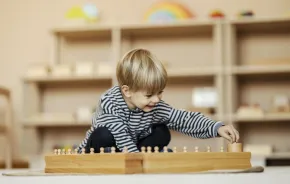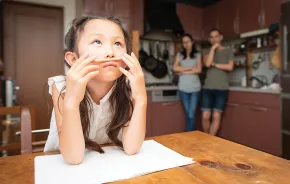The flip-flops, the daylight hours, the bright rays peeking through the gray — summer’s coming any time now. That means you’re busy trying to whip up just the right set of experiences for your school-age kids that will blend fun and learning with family time. And with any luck, those experiences will provide sparkling material for their future “What I Did During Summer Vacation” essays.
Somewhere between baseball games, swim team, soccer camp and Kumon class, there’s a week or two that begs for the kind of old-fashioned together time we used to call “trips” and Expedia calls “Exciting Family Fun.” And whether you spend that week unwinding at a nearby beach or jetting off to Rome or Brazil, you can make that time memorable and entertaining — while tossing a little knowledge and culture into the mix.
Stacy Winegardner is a big believer in using those “teachable moments.” As education and exhibits director of Kidsquest Museum in Bellevue, Winegardner’s expanded definition of “family vacation” includes spending quality together time at the park, or even in your own back yard.
“The main point is getting out as a family,” she says. “We are surrounded by so many amazing things outside. There is so much knowledge kids can access without even realizing they are learning.”
Winegardner sees educational opportunities in the kinds of nature-produced objects most of us breeze right by: rocks, trees, seashells. Use these things as starting points for beginning-level earth science and ecology lessons, she suggests.
“Talk to your kids about the way the moon can affect tides and the way moonlight can affect seas,” she says. “You don’t have to go to a science center to do that.”
Traveling on a ferry? Talk about boats, study the ferry maps and discuss transportation. “The port of Seattle is huge,” says Winegardner. “But how do ports like this work? Kids might like to know ways goods are transported and how we get the shoes or the videogames they buy at the store.”
Set what Debbie Kray of the Children’s Museum of Tacoma calls “summer learning goals.” It can be as simple, she says, as talking about planting a family garden. “Have the kids research plants or seeds, or do the math about planting times and chart growth,” says Kray, director of product development at the museum. “And you don’t have to let them know they’re doing ‘summer learning.’”
Big trips
If you’re lucky enough to be taking a Big Trip — and anything out of the state qualifies as one — you might want to put in some prep time. “Read books with your child about the location, help create a budget or calculate what the daily expenses will be,” suggests Kray.
Don’t underestimate the power of film. It’s fun to watch movies set in your destination — think An American in Paris — and kids absorb cultural and historical ingredients (baguettes? Gershwin?) whether they’re trying to or not.
My own children were 12 and 15 on their first trip to Israel. In a perfect world, they’d have devoured Exodus by Leon Uris, all 608 pages of it. I had to settle for the two of them gazing at the 208-minute screen version that featured Paul Newman. All things considered, it wasn’t a terrible trade-off.
The pre-trip reading list need not be limited to Fodor’s. From The Diary of Anne Frank to Mary Poppins, children can visualize culture, geography and history as reflected through fiction, narratives and biographies. For reading lists or travel reading suggestions, contact the Seattle Public Library at 206-386-4636 or check its Web site, www.spl.org.
What else can you do together? Pour over maps and ask the kids to help plan routes. Compute distances and time frames. How long will it take to get from point A to point B? How will you get there: by plane, train or automobile?
As a French instructor at the International School in Bellevue, Bob Ellis leads students on visits to France. As the parent of three sons he, along with his wife, leads family visits to Europe. Ellis likes to give his kids, both his students and own children, a say in where they go.
He advises other parents, even parents of small children, to do the same. “If a 4-year-old is interested in seeing the cows in Switzerland because he’s looked at pictures of them in a book, then that’s what you should go see,” he says.
Linda Morgan, ParentMap’s associate editor, writes frequently on education issues.
This story originally ran in the June, 2007 issue of ParentMap.
Tips for family travel
Off to a foreign country with the kids? Here are Bob Ellis’ tips on
family travel:
1. Think about places you’d like to visit, then cut out two-thirds of them. Concentrate on a few areas and really get to know them.
2. Visit two places in two weeks. The younger the child, the fewer places you should visit.
3. Do the little things with kids, not the big things. Watch people make cheese. Stop in small villages and towns. Go see castles and look at the cobblestone roads and the swans in the park.
4. Learning experiences are everywhere in a foreign country. There’s probably another language going on. Maybe stores close at 1 p.m. Help your child see the things that are done differently.
5. Preparing for a trip, living it and living it afterwards are of equal value. When kids keep journals, their “after” experience will be much better. Another option: Take a video camera along and ask your child to talk into it; or assemble a post-trip scrapbook, complete with photos, descriptions and assorted small mementos.
6. The more flexible you are, the more fun your trip will be. Let things happen. If your children really like a place, stay there. You may not get the exact hotel you want, but you should be able to find a place to stay.









